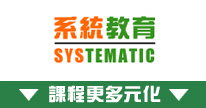|
課程優惠!現凡同時報讀以下兩個課程:
即減 $820!
|
推介服務:課堂錄影隨時睇 (在家觀看 = 0%,在校觀看 = 100%)
學員使用 WhatsApp、電話或本網頁報名,待本中心確認已為學員留位後,即可使用  繳付學費,過程簡便!
繳付學費,過程簡便!
* 各政府部門可使用 P Card 付款
如使用 P Card 繳付考試費,考試費需另加 2.5% 行政費
推介服務:課堂錄影隨時睇 (在家觀看 = 100%,在校觀看 = 0%)
學員使用 WhatsApp、電話或本網頁報名,待本中心確認已為學員留位後,即可使用  繳付學費,過程簡便!
繳付學費,過程簡便!
* 各政府部門可使用 P Card 付款
如使用 P Card 繳付考試費,考試費需另加 2.5% 行政費
注意! 客戶必須查問報讀學校的教育局註冊編號,以確認該校為註冊學校,以免蒙受不必要的損失!
